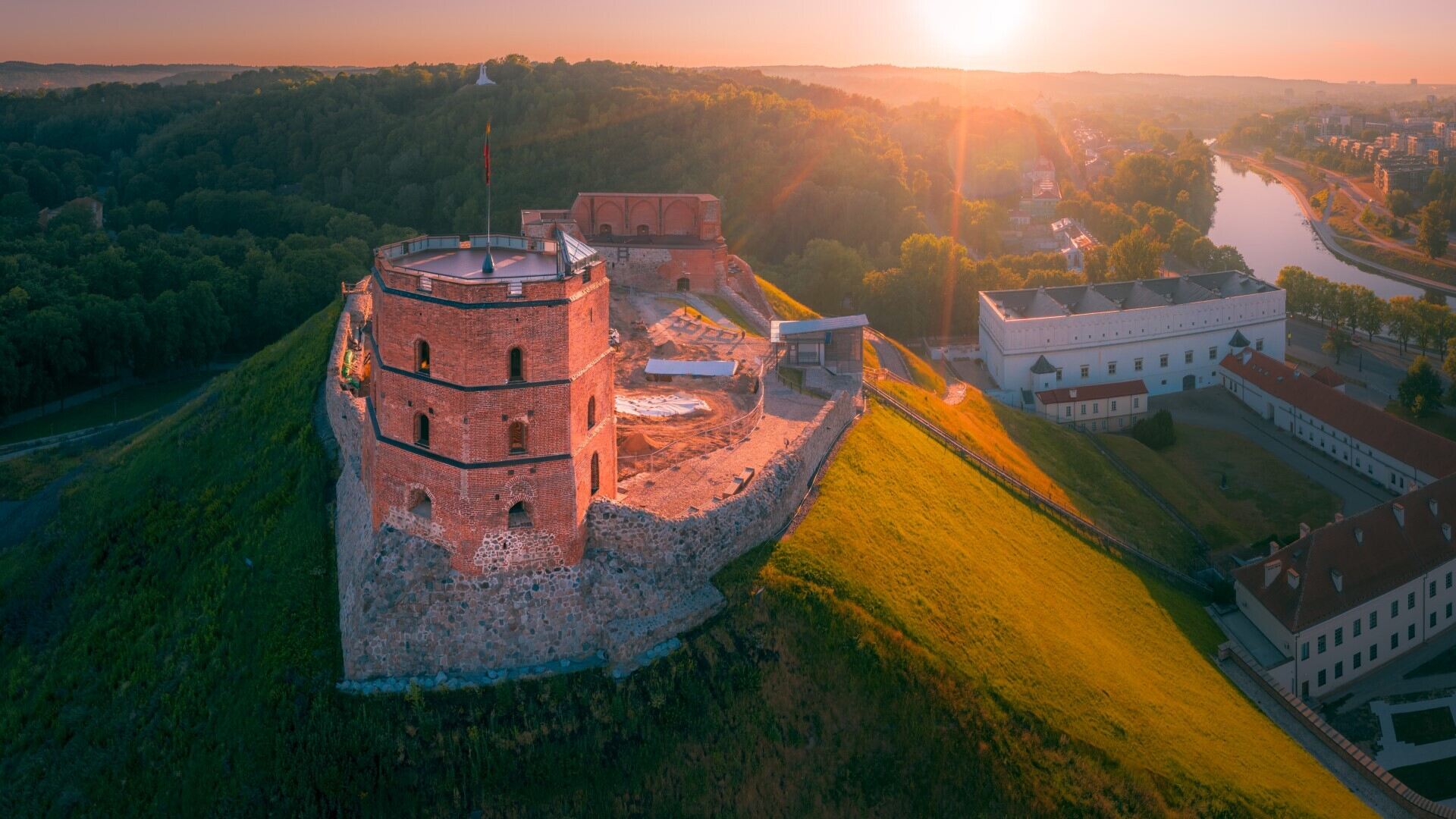
Lithuania, a small yet vibrant country in the Baltic region, often flies under the radar. But did you know it was the first Soviet republic to declare independence in 1990? This fascinating nation boasts a rich history, stunning landscapes, and unique cultural traditions. From its medieval castles to its lush forests, Lithuania offers a blend of old-world charm and modern innovation. Ever heard of the Hill of Crosses? It's a pilgrimage site with over 100,000 crosses! Whether you're a history buff, nature lover, or just curious, Lithuania has something to pique your interest. Ready to learn more? Let's dive into 20 intriguing facts about this Baltic gem!
Key Takeaways:
- Lithuania has a rich history, from being the first Soviet republic to declare independence to forming the Polish-Lithuanian Commonwealth. Its culture, natural beauty, and modern advancements make it a unique and fascinating country.
- Lithuania's traditions, including midsummer festivals and unique cuisine, are deeply rooted in its history and culture. Its natural landscapes, tech advancements, and love for basketball make it a diverse and intriguing nation.
Lithuania's Rich History
Lithuania, a small country in the Baltic region, boasts a history filled with fascinating events and milestones. Here are some intriguing historical facts about this nation.
-
First to Declare Independence: Lithuania was the first Soviet republic to declare independence from the USSR on March 11, 1990.
-
Grand Duchy of Lithuania: During the 14th century, the Grand Duchy of Lithuania was the largest country in Europe, stretching from the Baltic to the Black Sea.
-
Battle of Grunwald: In 1410, Lithuania, allied with Poland, defeated the Teutonic Knights in the Battle of Grunwald, one of medieval Europe's largest battles.
-
Union with Poland: The Union of Lublin in 1569 created the Polish-Lithuanian Commonwealth, one of the largest and most populous countries of its time.
Cultural Wonders of Lithuania
Lithuania's culture is rich with traditions, art, and unique customs. Here are some cultural highlights.
-
Lithuanian Language: Lithuanian is one of the oldest languages in the world, closely related to ancient Sanskrit.
-
Hill of Crosses: Near Šiauliai, the Hill of Crosses is a pilgrimage site with over 100,000 crosses, symbolizing Lithuanian faith and resistance.
-
Kaziukas Fair: Held annually in Vilnius, the Kaziukas Fair dates back to the 17th century and celebrates Saint Casimir with crafts, food, and music.
-
Lithuanian Folk Music: Sutartin?s, traditional Lithuanian multipart songs, are recognized by UNESCO as an Intangible Cultural Heritage.
Natural Beauty and Landscapes
Lithuania's natural landscapes offer breathtaking views and unique ecosystems. Here are some natural wonders.
-
Curonian Spit: A UNESCO World Heritage site, the Curonian Spit is a 98 km long sand dune peninsula shared with Russia.
-
Aukštaitija National Park: Established in 1974, this park is known for its lakes, forests, and ancient villages.
-
Nemunas River: The Nemunas is the longest river in Lithuania, flowing through the country and into the Baltic Sea.
-
Dz?kija National Park: This park is famous for its dense forests, traditional wooden villages, and mushroom picking.
Modern Lithuania
Modern Lithuania is a blend of historical heritage and contemporary advancements. Here are some facts about its current state.
-
Member of the EU and NATO: Lithuania joined the European Union and NATO in 2004, strengthening its international ties.
-
Vilnius Tech Hub: Vilnius, the capital, is becoming a tech hub with a growing number of startups and tech companies.
-
Euro Adoption: Lithuania adopted the Euro as its currency on January 1, 2015, replacing the Lithuanian litas.
-
Basketball Craze: Basketball is the most popular sport in Lithuania, with the national team being one of the best in Europe.
Unique Lithuanian Traditions
Lithuania's traditions are unique and deeply rooted in its history and culture. Here are some interesting customs.
-
Jonin?s Festival: Celebrated on June 24, Jonin?s is a midsummer festival with bonfires, songs, and traditional rituals.
-
Užgav?n?s: This pre-Lenten festival involves wearing masks, dancing, and eating pancakes to chase away winter.
-
Rasos Festival: Similar to Jonin?s, Rasos is an ancient solstice festival celebrating nature and fertility.
-
Lithuanian Cuisine: Traditional dishes like cepelinai (potato dumplings) and šaltibarš?iai (cold beet soup) are staples in Lithuanian cuisine.
Lithuania's Rich Tapestry
Lithuania's history, culture, and natural beauty offer a fascinating blend of old-world charm and modern vibrancy. From its medieval castles to its lush forests, this Baltic gem has something for everyone. The country's unique language, rich traditions, and resilient spirit make it a captivating destination. Whether you're exploring Vilnius' cobblestone streets or marveling at the Hill of Crosses, Lithuania leaves a lasting impression. Its contributions to art, science, and sports highlight a nation proud of its heritage yet eager to embrace the future. So, next time you're planning a trip or just curious about new places, consider Lithuania. You'll find a land full of surprises, stories, and stunning landscapes. Dive into its rich tapestry and discover why Lithuania is a hidden gem worth exploring.
Frequently Asked Questions
Was this page helpful?
Our commitment to delivering trustworthy and engaging content is at the heart of what we do. Each fact on our site is contributed by real users like you, bringing a wealth of diverse insights and information. To ensure the highest standards of accuracy and reliability, our dedicated editors meticulously review each submission. This process guarantees that the facts we share are not only fascinating but also credible. Trust in our commitment to quality and authenticity as you explore and learn with us.


